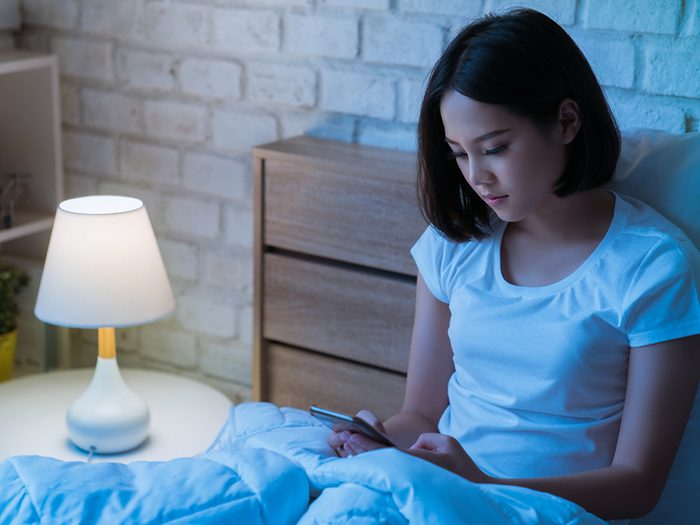
Find out what blue light is doing to your body and your mental health
You wake up. Check your phone. Head to work. Sit at your computer all day. Go home. Maybe watch TV. Or work some more. Go to bed. Check your phone one more time. What does all this blue light screen time mean for your health?
According to new research from from Essilor Canada, it is affecting Canadians.
• 85 % of Canadians have encountered visual health issues over the past year, with symptoms ranging from itchy eyes and eye fatigue to double vision and problem seeing objects close up or from a distance.
• Only 57 % of those reported getting their eyes checked by an eye care professional.
We asked Dr. Jack DiBerardino, an optometrist in Orangeville, ON and one of the researchers of this data, for his insight on how blue light can affect our health, well-being and lifestyles.

What does blue light do to our eyes?
There are immediate effects from blue light.
The eye expert says: It can make you more alert and increased cognitive load (think better) and boost reaction time. But it can also cause some damage. “[In the] short term, when our eyes are exposed to blue light and increased demands it increases eye fatigue and dry eye symptoms,” says DiBerardino. “Chronic dry eye does lead to irreversible damage to the cells.”
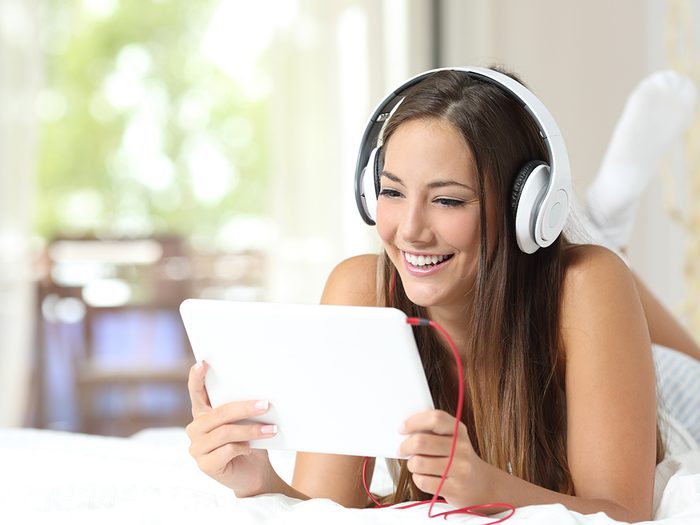
When is it good for us?
Some studies that suggest that blue light is helpful for mood, hormonal imbalances, memory and more.
The eye expert says: Blue light, as we’ve said, is good for day-to-day health, improving mood, alertness and brain function. “Blue light is very abundant in natural daylight from the blue sky,” says DiBerardino. “In fact, the intensity of blue light from the daylight is about 1,000 times more lux that a smart phone or iPad. The key message here is that it appears that it is not the intensity which is the concern but to do with exposure time and excessive prolonged exposure.”
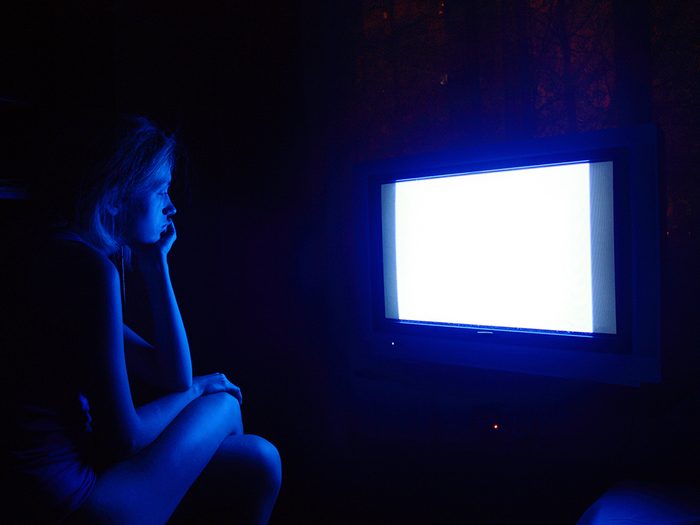
Can the damage from blue light be as harmful to our bodies as a sun burn?
There doesn’t seem to be truth in this myth.
The eye expert says: “Studies do not seem to suggest this – at least not yet,” says DiBerardino. Over the long term, blue light exposure can be dangerous for our eye health, as well as other health conditions related to bad sleeping habits. But you won’t feel the pain like you would from too much time under the sun.

Is there a “safe” amount of blue light exposure?
We know that blue light can mess with our sleep (which affects our entire wellbeing and health) and can stress the eyes. But blue light isn’t always a bad thing. It can improve mood and boost alertness. So how much is “safe” for you?
The eye expert says: There is no “safe” recommendation, according to DiBerardino. Instead you’ll just have to be aware of how much you are looking at blue light, and limit those times that are unnecessary, especially if you aren’t getting enough sleep. “Moderation is the key here,” he says. “Reducing exposure is essential for maintaining appropriate melatonin levels in our bodies which is important for, as above, circadian rhythm and our ability to fight disease – breast, prostate, diabetes, heart.”
What about red light therapy? Is this anti-aging skin treatment safe?
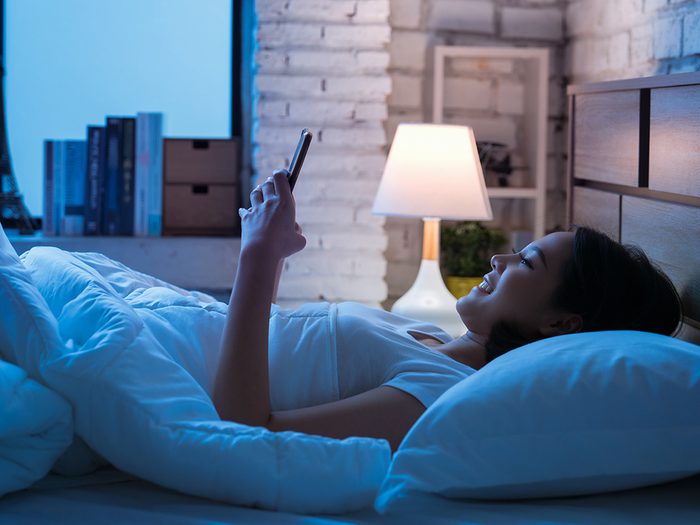
When should we avoid blue light?
Since it can affect how well we sleep, you don’t want to expose yourself to blue light before you go to bed.
The eye expert says: “As a general rule, we recommend no electronic devices 30 minutes before bedtime and take advantage of features such as ‘night shift’ and absorptive filters, such as Smart Blue and Prevencia,” says DiBerardino. (Smart Blue and Prevencia are both Essilor eye glass lenses.)

What do we do if we can’t avoid blue light?
Sometimes we just have to be exposed to blue light. So, what do we do?
The eye expert says: Blue light isn’t necessarily bad for us. It’s when we stare at it for too long when the issues come up. “Prolonged exposure is the key,” says DiBerardino. “Studies do show that wearing glasses which absorb some high energy blue light does make us feel more comfortable if we spend excessive time in front of electronic devices.”
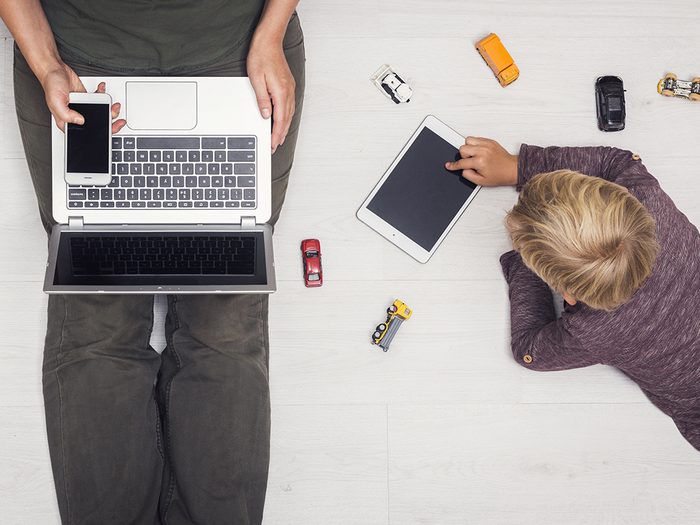
At what age are we at most risk for blue light damage?
Don’t worry. You are already passed it.
The eye expert says: “Developing eyes of children and teenagers are most at risk of ‘excessive exposure,’” says DiBerardino. So, make sure your kids aren’t having too much screen time.
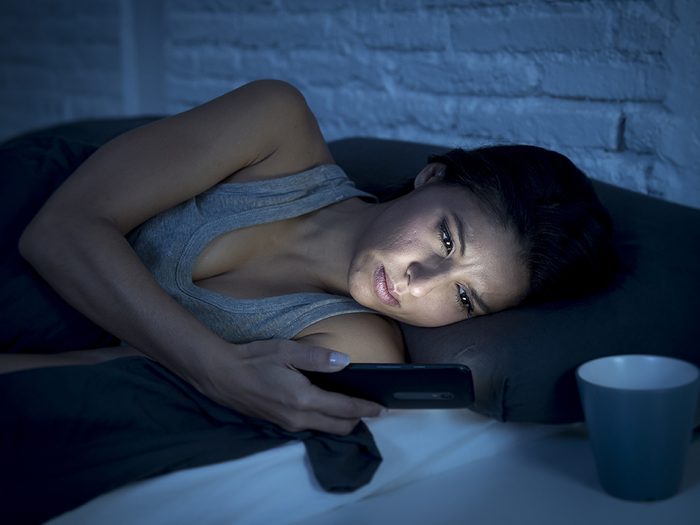
What are tech companies doing to help?
You do have options for limiting your exposure to blue light.
The eye expert says: Thanks to some tech innovations to limiting your exposure to blue light, you can download apps or wear computer glasses. “Most technology companies are well aware of this [health concern] and have included programs such as the Night Shift from Apple,” says DiBerardino. Just swipe up on your iPhone, and adjust the brightness of your screen. You can also do this from your phone settings.

When shopping for electronics, what should we know?
On your next trip to buy phone, tablet or computer, ask about the blue light controls.
The eye expert says: “Look for features that have built in Blue Light Smart programming,” says DiBerardino. He also recommends checking out this buying guide from whatoptomotiristsdo.com.
